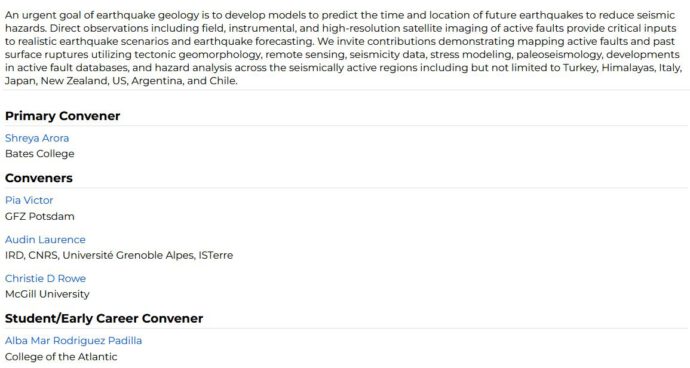More and more papers emerge on the February, 2023 earthquakes in Turkey and the East Anatolian Fault System. Additionally, we have a database of paleoseismology studies in New Zealand (spoiler: it’s a lot!) and many more papers on paleoseismology and tectonic geomorphology. Enjoy reading!
morePosts in the category » « ( 302 Posts )
-
New papers on paleoseismology, active tectonics, and archaeoseismology (Oct 2023)
2023-10-07 | in Paper -
New paper: Why geomorphic indices often fail in active tectonics studies
2023-09-17 | in Paper | 2 responsesGeomorphic indices can tell us about the tectonic activity of an area. The idea is that the landscape records the signal of active tectonics, for example in its river network, in its erosion pattern, or in its roughness. Geomorphic indices allow us to quantify this, that is, we can use standard algorithms to calculate numbers from a DEM that say ‘active’ or ‘inactive’. This is very attractive because essentially, all that is needed is a DEM and a GIS (and perhaps MATLAB). The number of papers on geomorphic indices is currently exploding, and I guess the fact that the method is so cheap and easy to apply plays a major role in that. No expensive field work, still meaningful results. But is this always true? In a new open access paper, we argue that without ground checking, probably not, at least in many cases.
more -
New papers on paleoseismology, active tectonics, and archaeoseismology (Sep 2023)
-
New papers on paleoseismology, active tectonics, and archaeoseismology (Aug 2023)
-
AGU Session S014 – Field observations, instrumental and high-resolution satellite imaging: A vision of improved active tectonics/paleoseismology hazard assessment.
2023-07-24 | in MeetingAGU has lots of interesting sessions to offer for paleoseismologists. Our colleague Pia Victor invites contributions to her session with Shreya Arora, Laurence Audin, Christie D Rowe, Alba Mar Rodriguez Padilla: Field observations, instrumental and high-resolution satellite imaging: A vision of improved active tectonics/paleoseismology hazard assessment.

-
New papers on paleoseismology, active tectonics, and archaeoseismology (July 2023)
2023-07-03 | in PaperFor many geologists the field season is up ahead or has already started, but perhaps you will find some time to read through the latest literature? Or you can use the winter season in the southern hemisphere to enjoy a good read? It would be a pity to miss some of these really interesting studies. Enjoy!
more -
INQUA summer school on Active Faults and Volcano-Tectonics, 25-28 September, Naples (Italy)
2023-06-27 | in PATA daysINQUA TERPRO’s project TPPT had decided to not organise PATA Days in the years with an INQUA congress, but instead to run a much smaller summer school for ECRs and DCRs. The summer school on Active Faults and Volcano-Tectonics will be held from 25-28 September in Naples (Italy). The event will be hosted by DiSTAR (Department of Earth Sciences, Enviroment and Resources , University of Naples «Federico II»).
The first two days will include lectures by researchers who will present state of the art studies on active faults. The second part includes two field trips in areas crucial for understanding active faults and the interplay between tectonics and volcanic activity. Download the circular (PDF) here.
more -
New papers on paleoseismology, active tectonics, and archaeoseismology (June 2023)
2023-06-05 | in PaperThis month’s list of papers includes the first few studies on the devastating earthquakes in Türkiye in February, 2023. Apart from that, we also have important work in archaeoseismology and great studies from New Zealand, an interesting shallow earthquake in the Tarim Basin, updates on surface displacement hazard and strain rate estimations, and papers on the Med and East Africa. Enjoy reading!
more -
New papers on paleoseismology, active tectonics, and archaeoseismology (May 2023)
-
New papers on paleoseismology, active tectonics, and archaeoseismology (April 2023)
2023-04-03 | in PaperThis is the longest list of papers we had since ages. We start with a brand new review article on recent developments in onshore paleoseismology by Jim McCalpin et al. Also in the list are plenty of papers on classical paleoseismology and earthquake geology, a few cool tsunami studies, some fault physics, SHA, and new methods. Enjoy reading!
more
